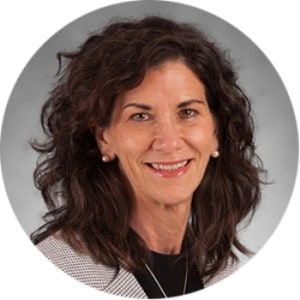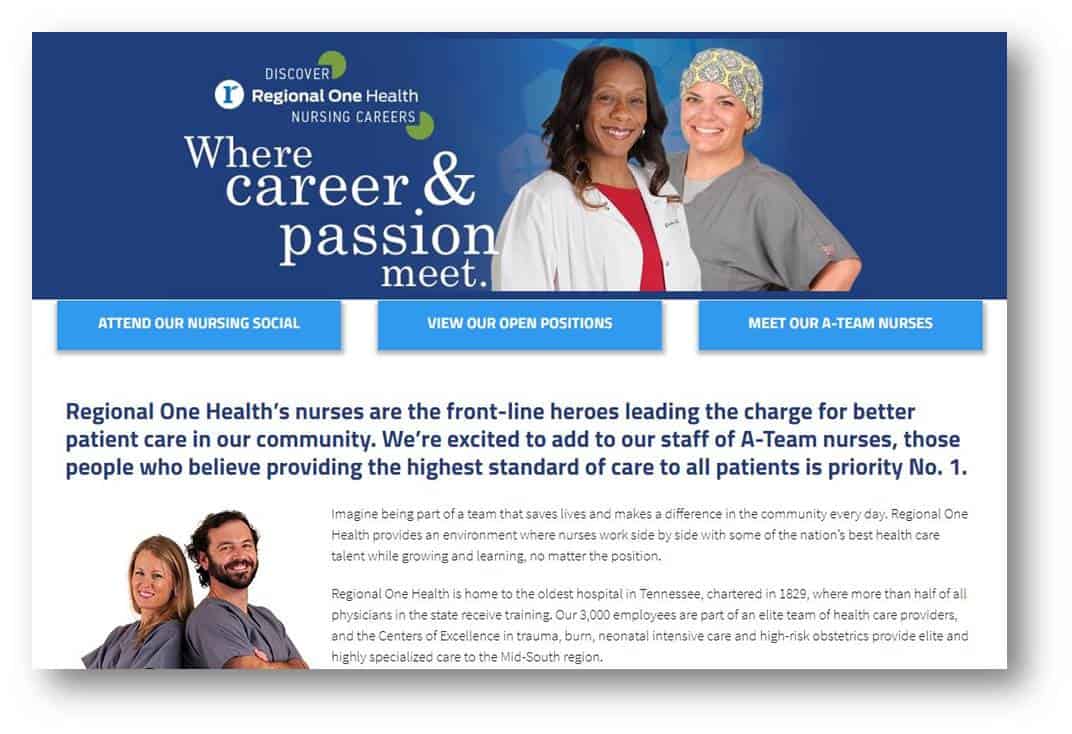Regional One Health is on the precipice of a new movement in how nursing leads better patient care. This nursing culture of success is led by Regional One Health’s people, from the nurses who have worked here for decades to the new team members who will join in the coming months.
Regional One Health will add positions to the current nursing staff, based on an effort to provide a more desirable working culture for our nurses to grow and enhance the patient experience. From new hires all the way up to hospital administration, this nursing culture of success is led by a staff of A-team members, those people who believe providing the highest standard of care to all of our patients is priority No. 1.

Lisa Cox Schafer, RN, MSN, NEA-BC, Chief Nursing Officer at Regional One Health.
“At new employee orientation I always ask how many of them would rather work with a full staff of B-team players or work short-staffed with all A-team players. They always want to work short-staffed with the A-team,” said Chief Nursing Officer Lisa Cox Schafer, RN, MSN, NEA-BC. “Well, we don’t want to work short-staffed. We want to work with a full team of A-team players. That will be transformational for this organization.”
A nursing culture of success starts at the top with an engaged leadership team. Regional One Health’s leadership is in sync with a unified vision of where it wants the hospital and its nursing team to go. The first order of business in this strategy is having the right leaders in place, people who can manage and lead teams.
But those leaders must listen. Administrators and managers can have great ideas, but staff have the solutions. They are the people at the patients’ bedside and Regional One Health’s administration wants to give them a voice, Schafer said. That includes hearing their ideas about how to bring more efficiency to care.
 “We want every person in this organization to be successful. We want an A-team who wants to come in and be challenged, people who want to grow and learn and be part of something that’s successful.”
“We want every person in this organization to be successful. We want an A-team who wants to come in and be challenged, people who want to grow and learn and be part of something that’s successful.”
The additional nurses at Regional One Health means improving patient-nurse ratios as well as building an internal float pool so more nurses are available when there is an influx in new patients or sick calls.
Other planned projects that will heighten nursing culture and bring a better patient experience include implementation of one central electronic record over the next year, and additional staff to serve as a type of air traffic controller on their respective patient care units.
“They’ll know if someone is held up for radiology or another consult that’s keeping them in the hospital longer than they need to be,” Schafer said.
Regional One Health wants to minimize the amount of time a patient is in the hospital and better efficiencies in nursing will lead the way. It starts the moment a patient arrives at the front door. Patients brought to the emergency department by ambulance should be offloaded quickly and safely.
Safety also drives much of the Regional One Health culture. That includes finding ways to be proactive rather than reactive to situations.
“It’s about helping everybody to understand what the issues are and what we can do differently to prevent things in the future,” Schafer said. “This is about finding ways to improve our care through everyone’s help.”
